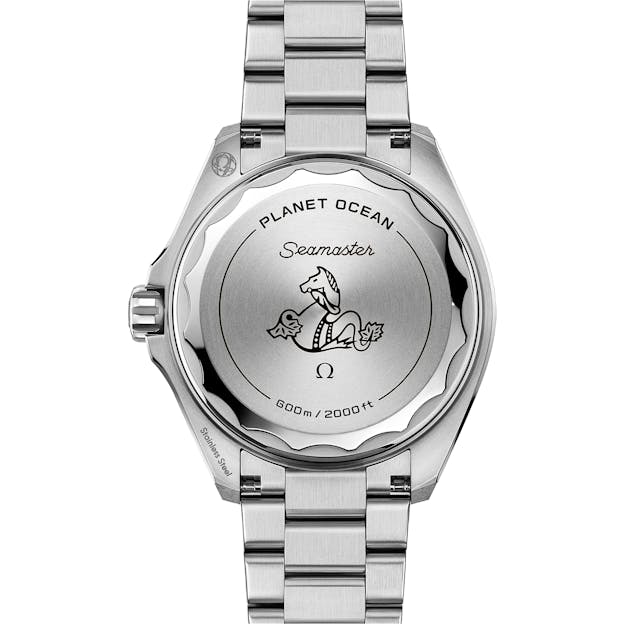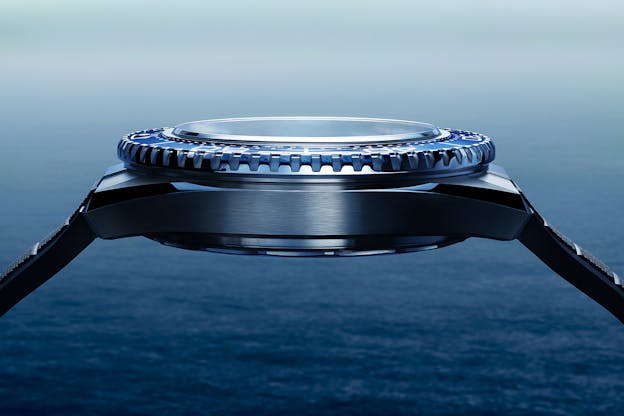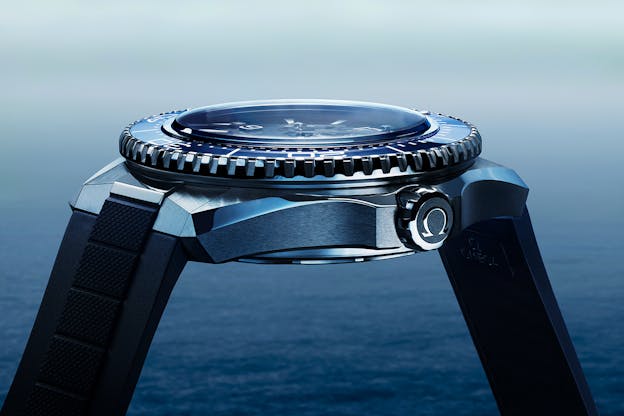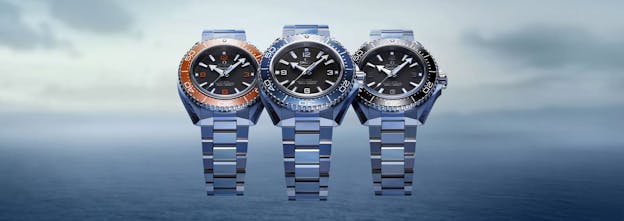Omega Launches The Seamaster Planet Ocean 600M Fourth Generation
And it’s a whole new watch (almost).
The Omega Seamaster Planet Ocean was originally launched in 2005, and since then, it’s gone through several redesigns, but has retained some key features right up through the introduction of the third generation of the model in 2016. That was the year that all of the Planet Ocean models became Master Chronometer certified, which was one of the biggest technical updates in the history of the Planet Ocean family, at least up until today. Those features included lyre shaped lugs, 600 meter water resistance, and the presence of a helium escape valve, or HEV, which is feature designed for saturation divers and which is intended to safely vent high pressure helium gas from inside the case during decompression. The new Planet Ocean 4th Generation models have revised almost every key aspect of the watch, including the engineering of the cases, and while they’re still visibly Planet Ocean watches, major design changes are immediately visible, and as well, there are some less visible engineering updates under the hood.

The first thing you’ll notice about the new Planet Oceans is that the case is much more angular than before; the lyre shaped lugs are gone, and have been replaced by a sharp-edged, faceted case profile with a three-link bracelet, with polished center links. The use of a case with more aggressive geometry is unusual in the production of modern Planet Ocean watches, although it’s not unprecedented in the Seamaster lineup overall – in fact, there is a family resemblance to the original Seamaster 300 from 1957.
The second thing you’ll notice is that the cases have been slimmed down considerably.

The outgoing 3rd generation models were 16.09mm thick, and 43.5mm in diameter; the new models are just 13.79mm thick, and 42mm in diameter, which makes it roughly equal in size to the Speedmaster Moonwatch. The bezels are of course still ceramic, and the new Planet Oceans retain arrowhead minute and hour hands found in all the preceding variants. The crystal is flat, rather than domed, and one of the biggest reductions in size looks to have come from shaving down the thickness of the back of the watch, which is – and this is one of the bigger design changes – no longer a display back.

Cases are in stainless steel – a titanium version seems inevitable at some point although the watches are only available in steel at launch – with a titanium inner case ring, which seems to have been a key element in reducing the size of the watch while at the same time maintaining a high level of water resistance, and which may have also had something to do with eliminating the HEV.


Omega says that the case engineering for the 4th gen Planet Ocean watches was influenced by lessons learned in designing the 2019 Planet Ocean Ultra Deep. As with the Ultra Deep, the new Planet Oceans have a two part case, with an outer steel case and an inner titanium case ring. In the Ultra Deep, the crystal was compressed onto a gasket made of LiquidMetal, which mated with the conical inner surface of the case and which was supported from the back by the titanium caseback. The inner case ring for the new Planet Ocean models forms a sealed container for the movement, consisting of the crystal, the case ring, and the titanium caseback, which allows the case to be reduced in thickness. This construction also contributes to sealing the watch so that helium intrusion is no longer an issue; hence, the omission of the HEV in the new models.
The movement is the Omega co-axial caliber 8912, with a 60 hour power reserve, running at 25,200 vph; the watches are both chronometer certified by the COSC and Master Chronometer certified by METAS.


The new models come in three colorways: blue or black bezels with white numerals, or an orange bezel with orange numerals, with the aforementioned steel bracelets, or with black rubber straps or, on the orange bezel model, an orange strap. Lume is as you’d expect, present in copious amounts, with blue emission lume on the dial markers, hour hand, and seconds hand, and green emission on the minute hand and lume pip on the bezel (the difference in color is meant to make it easier to quickly distinguish the minute hand when using the bezel for elapsed time measurement).
It seems pretty likely that the fan favorite’s going to be the orange bezel model; it’s a signature color for the Planet Ocean family and it just looks the part – slightly reminiscent of the gone-but-not-forgotten Ploprof, although it might be a little more orange than you’d care for in a daily wear watch. For some tastes there are a couple of potential gotchas, including the polished center links on the bracelets, the faceted case geometry and highly polished surfaces in general, and the absence of the HEV, but at least in the latter instance it’s hard to argue with the decision to leave it off, from a technical standpoint; if the case is well sealed enough that you don’t need it, then it’s really nothing more than a decorative rather than function feature (and leaving it out means one less thing to bump against something). The slimmer, smaller cases are an obvious win for Omega, and will probably make the Planet Ocean a watch which someone with a smaller wrist, or even just a taste for less massive watches, will be able to consider, who weren’t able to consider them before. With technical improvements, better wearability, and a sharp new design, the 4th Generation Planet Ocean watches seem like a very solid launch straight out of the gate.
The Omega Seamaster Planet Ocean: cases, stainless steel, 42mm x 13.79mm, 600M water resistance, with inner titanium case ring. Black, blue, or orange ceramic bezels. Movement, Omega co-axial caliber 8912, automatic with 60 hour power reserve, running at 25,200 vph/3.5Hz in 38 jewels; Master Chronometer/COSC certified, with freesprung adjustable mass balance and silicon balance spring. Available on rubber straps, or steel braceets with folding clasp and wet-suit extension. Black and blue models, $9,200 on bracelet and $8,600 on rubber strap; Orange model $8,900 on a strap and $9,500 on a bracelet.
The 1916 Company is proud to be an authorized retailer for Omega watches; contact us for pricing and availability.

